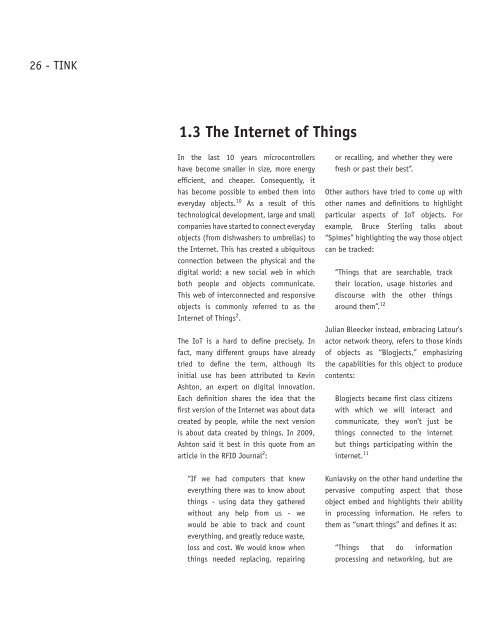TINK - sketching product experiences of connected objects
Tink is the result of my graduation project from the master in design for interaction at TUDelft. Tink is a web platform that connects products with one another via the Internet, it provides designers with a complete Internet of Things (IOT) development environment. Designers are provided with a rich stack of features to sketch, prototype and test IOT projects. Tink is a user-friendly, visual, collaborative, open-source tool for designers to build connected interactions among objects.
Tink is the result of my graduation project from the master in design for interaction at TUDelft.
Tink is a web platform that connects products with one another via the Internet, it provides designers with a complete Internet of Things (IOT) development environment.
Designers are provided with a rich stack of features to sketch, prototype and test IOT projects. Tink is a user-friendly, visual, collaborative, open-source tool for designers to build connected interactions among objects.
Create successful ePaper yourself
Turn your PDF publications into a flip-book with our unique Google optimized e-Paper software.
26 - <strong>TINK</strong><br />
1.3 The Internet <strong>of</strong> Things<br />
In the last 10 years microcontrollers<br />
have become smaller in size, more energy<br />
efficient, and cheaper. Consequently, it<br />
has become possible to embed them into<br />
everyday <strong>objects</strong>. 10 As a result <strong>of</strong> this<br />
technological development, large and small<br />
companies have started to connect everyday<br />
<strong>objects</strong> (from dishwashers to umbrellas) to<br />
the Internet. This has created a ubiquitous<br />
connection between the physical and the<br />
digital world: a new social web in which<br />
both people and <strong>objects</strong> communicate.<br />
This web <strong>of</strong> inter<strong>connected</strong> and responsive<br />
<strong>objects</strong> is commonly referred to as the<br />
Internet <strong>of</strong> Things 2 .<br />
The IoT is a hard to define precisely. In<br />
fact, many different groups have already<br />
tried to define the term, although its<br />
initial use has been attributed to Kevin<br />
Ashton, an expert on digital innovation.<br />
Each definition shares the idea that the<br />
first version <strong>of</strong> the Internet was about data<br />
created by people, while the next version<br />
is about data created by things. In 2009,<br />
Ashton said it best in this quote from an<br />
article in the RFID Journal 2 :<br />
“If we had computers that knew<br />
everything there was to know about<br />
things - using data they gathered<br />
without any help from us - we<br />
would be able to track and count<br />
everything, and greatly reduce waste,<br />
loss and cost. We would know when<br />
things needed replacing, repairing<br />
or recalling, and whether they were<br />
fresh or past their best”.<br />
Other authors have tried to come up with<br />
other names and definitions to highlight<br />
particular aspects <strong>of</strong> IoT <strong>objects</strong>. For<br />
example, Bruce Sterling talks about<br />
“Spimes” highlighting the way those object<br />
can be tracked:<br />
“Things that are searchable, track<br />
their location, usage histories and<br />
discourse with the other things<br />
around them”. 12<br />
Julian Bleecker instead, embracing Latour’s<br />
actor network theory, refers to those kinds<br />
<strong>of</strong> <strong>objects</strong> as “Blogjects,” emphasizing<br />
the capabilities for this object to produce<br />
contents:<br />
Blogjects became first class citizens<br />
with which we will interact and<br />
communicate, they won’t just be<br />
things <strong>connected</strong> to the internet<br />
but things participating within the<br />
internet. 11<br />
Kuniavsky on the other hand underline the<br />
pervasive computing aspect that those<br />
object embed and highlights their ability<br />
in processing information. He refers to<br />
them as “smart things” and defines it as:<br />
“Things that do information<br />
processing and networking, but are


